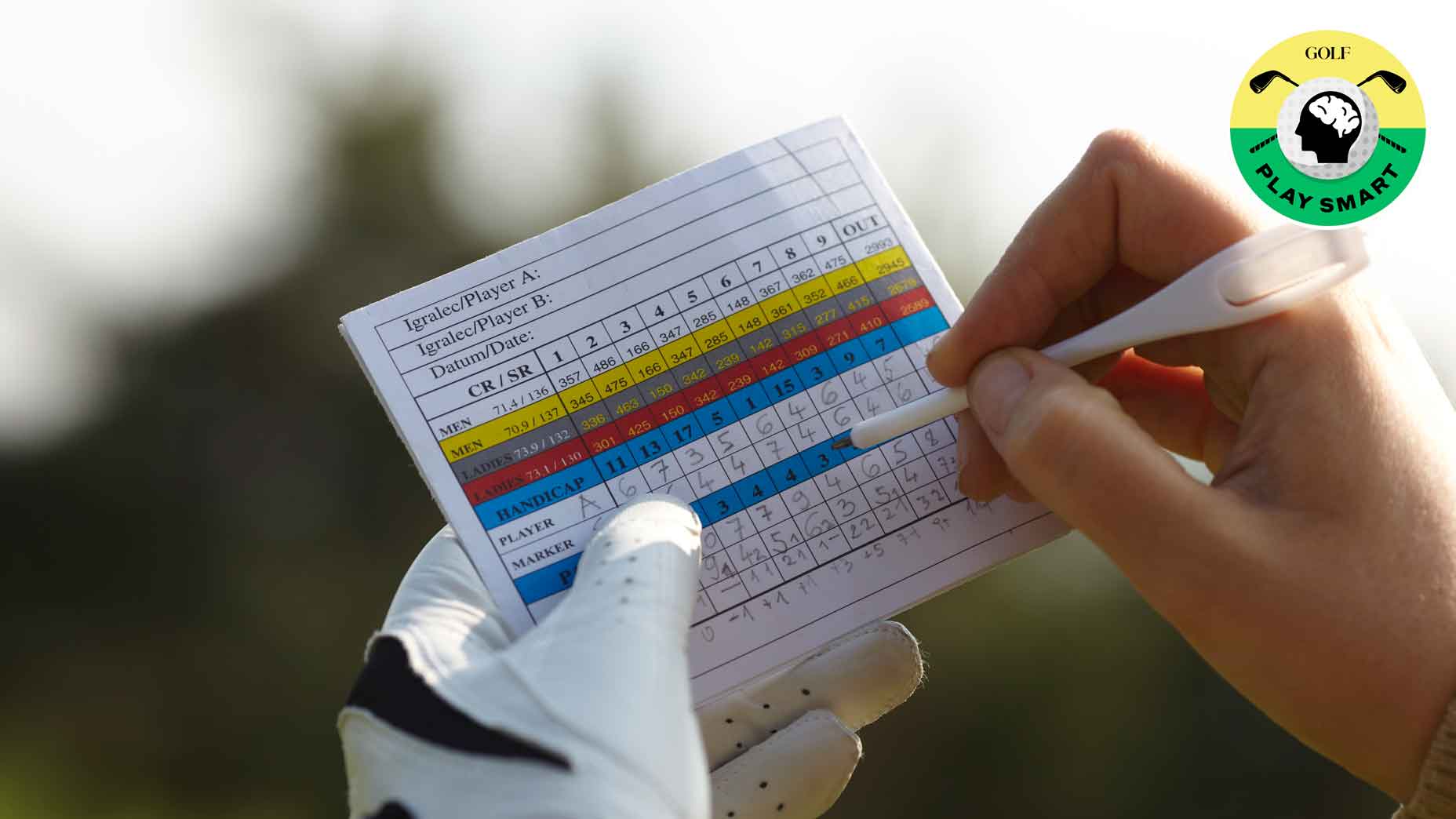Welcome to Play Smart, a regular GOLF.com game-improvement column that will help you play smarter, better golf.
I consider myself a mid-handicapper, boasting a respectable 13 index, but there are plenty of times when I’ll play with high handicappers and notice that they’re competing with me stroke for stroke, straight up.
So what gives?
While I tend to have better ball-striking ability and distance off the tee — as well as better fundamentals in the golf swing — where these high handicappers tend to gain strokes on me is on the putting surface.
For example, over the summer I was playing a round with GOLF Top 100 Teacher Brian Mogg and a couple of random guys who said they had just gotten into golf over the past couple of years.
As the round progressed, I noticed something pretty damn frustrating: I was only up by two strokes over both of them, even though they were chasing their shots all over the course and I wasn’t.
“It pisses me off that I’m not burying these guys,” I admitted to Mogg.
“You have no touch on the greens, Nick,” Mogg bluntly replied. “Dial in there and you’ll be closer to your goal of breaking 80.”
It’s no secret that I’ve battled putting demons all year long; I’ve written often about trying to eliminate 3-putts that just wreck my scorecard. It was during that round with Mogg over the summer that I truly realized why the flatstick is the most important club in the bag.
Sure, every player wants to bomb the driver and impress their buddies with added distance off the tee. But if you really want to score lower, Mogg has good company in GOLF Top 100 Teacher Jim Murphy, who believes that high handicappers (and every golfer, really) need to focus most of their attention on putting.
If you’re a high-handicapper, the flatstick will make the most difference
According to Murphy, he gets asked all the time for the “secret sauce” to scoring better. Without hesitation, he “always” points to the putter.
“Putting is 43% of the game, yet people rarely spend 43% of their practice time on putting,” he says. “I get it, it’s not fun, it hurts your back after a while, and it can be boring.
“Now, that being said, more often than not, most high handicappers practice it wrong, and it doesn’t help them get better.”
A stat that every golfer should know is this: PGA Tour players average about a 99.4% success rate on putts from three feet and closer. So those are basically gimmes for the best players in the world — whereas many amateurs push or pull those short putts quite frequently, and all those extra strokes add up at the end of each round.
This is why Murphy says a high handicapper player needs to obsess over short putts, practicing them as much as possible to shave strokes off their scorecard faster than any other area of their game.
“I ask high-handicap golfers how far from the hole they can go until they almost guarantee they make a putt,” says Murphy. “Some people astound me, saying it’s a mere 1-1.5 feet from the hole. I call this their ‘circle of certainty’.
“If your circle of certainty is only one foot, then you have to be a fantastic chipper and pitcher, ensuring you get those shots close to the hole. Likewise, your long lag putts need to be Tour caliber to avoid 3-putting.”
This is where Murphy says players need to increase their circle of certainty, working to expand that comfort level from one foot to three feet and longer.
“To work on increasing your ‘circle of certainty’, start with a 1-footer and make 10 putts in a row,” Murphy recommends. “Then increase the distance to 1.5 feet with another 10 shots, making each without missing.
“If you do miss one shot, start over again, and only move to the next distance when you’ve made 10 in a row.
“Practicing this way will make you a better putter.”
Murphy is realistic in his approach. He knows that all golfers — not just high handicappers — won’t just dial in their putting stroke by only working on putts from within 1-3 feet.
However, this is where he says practicing lag putts come in handy.
“On Tour, 32 feet is roughly the break even point, where players one-putt as many times as they 3-putt,” explains Murphy. “So anything closer than 32 feet, players one-putt more often than they 3-putt, and anything farther away, they 3-putt more than they one-putt.
“So for amateurs, when working on your lag putting speed, 32 feet is a good distance to practice from.”
A combination of lag putting practice mixed with short putting practice will leave players more confident each time they walk onto the green — giving themselves a better chance at shooting low. This is why Murphy thinks putting is the great equalizer.
“This is why the one club in your bag that can save you strokes quicker than anything else in your bag is the putter,” Murphy says.
Wellputt First Golf Putting Mat – 10ft
View Product
